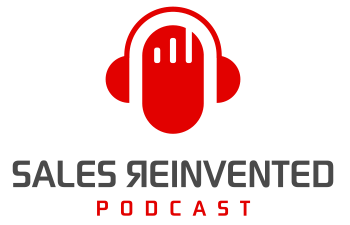Episode 323: Park Howell

Meet
Park Howell
Park Howell is known as The World’s Most Industrious Storyteller having grown purpose-driven brands by as much as 600 percent. He is a 35+ year veteran of the advertising industry and hosts the popular weekly Business of Story podcast, author of Brand Bewitchery, and co-authored The Narrative Gym for Business. He is sought after internationally to help leaders excel through the stories they tell.
Our Mission Is To Change The Negative Perception Of Sales People
Our Vision Is A World Where Selling Is A Profession To Be Proud Of
Park Howell knows that if you’re a leading sales professional, you want to communicate and resonate on a deep level to convert prospects to life-long evangelists for your brand. But you may not connect as well as you could because you lead with logic and reason. Your audience wants the emotional pull of an irresistible story.
That’s why Park coaches salespeople with his ABT framework to escalate and accelerate the sales process. Storytelling is the fundamental agile communication tool to get everyone on board as quickly as possible—especially prospects. He shares more about his storytelling framework in this episode of Sales Reinvented!
Outline of This Episode
- [1:02] Why storytelling is an important skill to possess
- [3:05] Is storytelling a gift that can be learned?
- [4:08] Park’s ABT framework for storytelling
- [5:58] The attributes of a great storyteller
- [8:13] Resources to improve storytelling
- [10:15] Park’s top 3 storytelling dos and don’ts
- [13:34] How do you employ brevity in storytelling?
- [15:10] Why salespeople choose not to tell stories
- [16:02] Non-narrative bravado versus true narrative
Is storytelling a gift that can be learned?
Great storytellers are like great athletes. They learn and perfect their craft over years of practice. When armed with the right framework—you may not elevate to the level of experts—but you can give yourself an unfair advantage in the sales realm. It comes back to how to use narrative to your benefit. But you have to understand the magic to cast the spell. If you learn storytelling techniques, it will up your game and boost your sales. That’s why Park created the ABT framework.
Park’s ABT framework
The ABT framework—i.e. the “And, but, and therefore” framework—is set up on the three forces of story: agreement, contradiction, and consequence. The limbic brain is a pattern-seeking cause-and-effect, decision-making, buying brain. It loves the setup, problem, and resolution dynamic that’s offered through storytelling.
- Agreement: You place your audience at the center of the story. So you must understand who they are, appreciate what they want and why it’s important to them this is the “and”).
- Contradiction: You must empathize with why they don’t currently have what they want. What are the obstacles? What “but” is in the way?
- Consequence/Resolution: How are you uniquely equipped to help them get what they want? This is the “therefore.”
It’s about understanding, empathizing, and appreciating who your prospect is, what they want, and how you can help them get it.
Park’s top 3 storytelling dos and don’ts
As you use the ABT framework, Park notes there are some dos and don’ts you want to keep in mind:
- According to storytelling expert Robert McKee, You have to understand your audience in a “God-like way.” Who are you writing the story for? What do they care about? How will you make your story something they can relate to and connect with? It’s the same for storytelling in business sales and marketing.
- Help your prospect imagine what a brighter future looks like for them if they work with you. No bullet-point list of features and functions can make this happen. You have to fire up the theater of the mind and imprint images on their brain so you become remarkably memorable.
- The most vigorous stories rely on brevity. Use specific well-crafted language because the power is in the specifics.
- Don’t believe you’re already a good storyteller because chances are you’re probably not. You have to be intentional and use a framework to evolve from winging it to winning with it.
- Do not “and, and, and” your audience to death. Use the “setup, problem, and resolution” dynamic to build your storytelling abilities and tell a great story.
- Don’t dismiss the power of storytelling as a gimmick. Storytelling will differentiate you in a crowded market, build urgency for your offering, and deliver on the promises that you make.
How do you employ brevity in storytelling?
Park emphasizes that you must focus on the singular point you’re trying to make and hang everything else from it. Once you’ve hooked your listener and laid out the problem/solution dynamic, you need to share a short story to make a real-world impact using the five primal elements of a short story:
- When did it happen?
- Where did it happen?
- Who is the single protagonist it happened to?
- What happened? What was the outcome?
- How does it make your business point?
If you follow those elements in that order and share a story, your prospect can picture what the outcome looks like for them quickly.
Park drives home this episode with a story that demonstrates exactly how his ABT framework makes an impact on salespeople and their prospects. Don’t miss it!
Resources & People Mentioned
Connect with Park Howell
Connect With Paul Watts
Audio Production and Show notes by
PODCAST FAST TRACK
https://www.podcastfasttrack.com
Share This Episode, Choose Your Platform!
